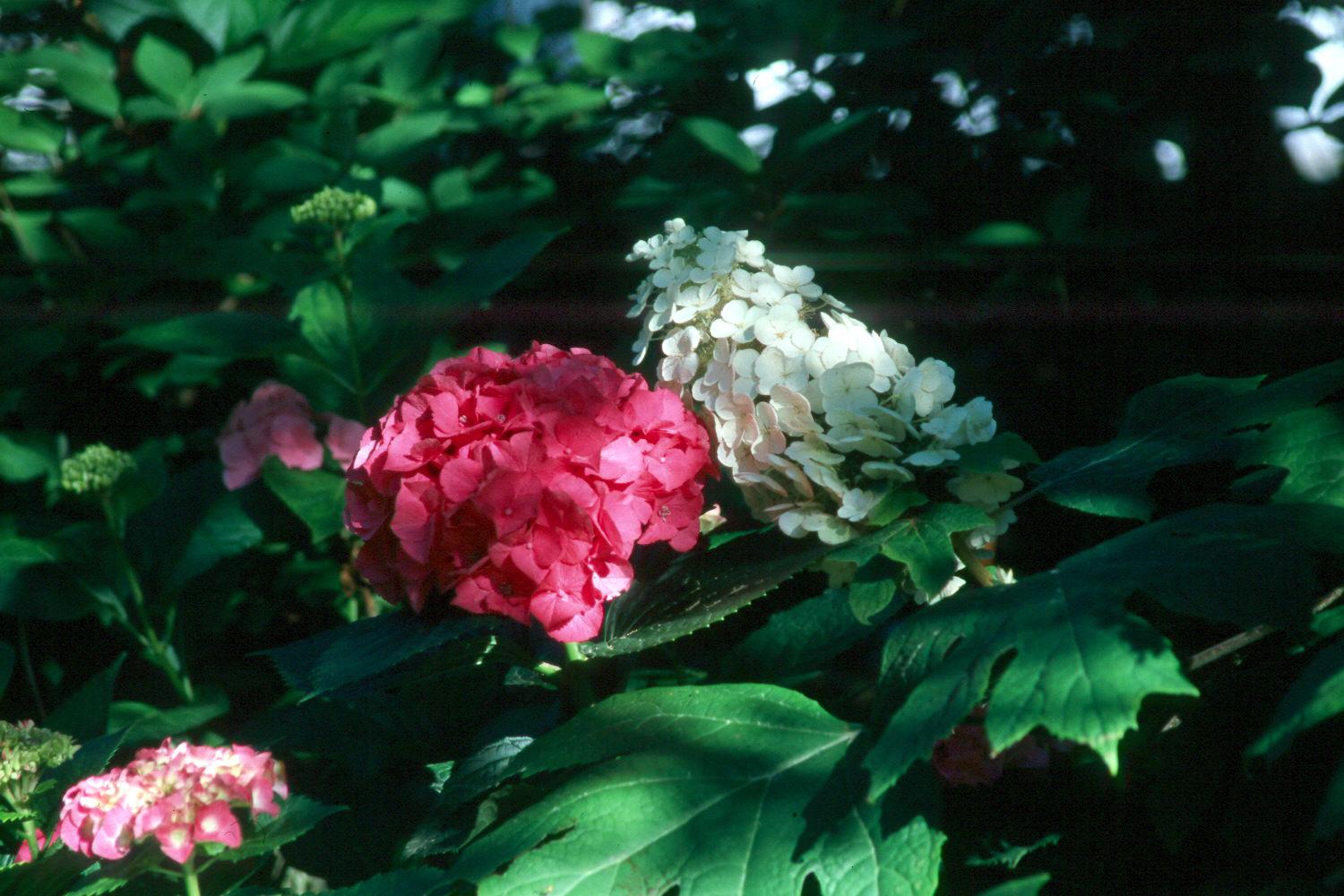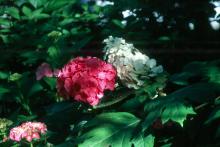Information Possibly Outdated
The information presented on this page was originally released on May 6, 2002. It may not be outdated, but please search our site for more current information. If you plan to quote or reference this information in a publication, please check with the Extension specialist or author before proceeding.
Hydrangeas make perfect plant gifts
By Norman Winter
MSU Horticulturist
Central Mississippi Research & Extension Center
Mother's Day is one of the many good reasons to consider plants as gifts for the special people in your life.
One of the best options is the French hydrangea, but don't let the French affiliation throw you. The hydrangea made its way to the United States during the 1800s and is loved throughout the South. Although it is called the French hydrangea, it is really from Japan. The French only did a little tweaking, but somehow they've got their stamp on the origination in many gardeners' minds.
The hydrangea has been called the queen of the late-blooming shrubs. They brighten those partially shaded areas of the landscape like no other plant does. The hydrangea is suited to massing, using as specimen in-between evergreens and even in large containers. The flowers are great for cutting and bringing indoors for drying.
If you think about it, it is remarkable when a plant performs in soils that are either acidic or alkaline. It is even more wonderful that the plant has large pink flowers in soils with the higher pH and blue in the soils with the lower pH.
No other plant seems to garner as many questions on flower color, propagation and drying. No plant can quite reap the amount of frustration, as does a hydrangea, should it ever fail to bloom once in 30 years.
The French hydrangea, also called bigleaf hydrangea, is offered to us with mop-head-shaped flowers that can defy logic with their size. They are also offered in what many connoisseurs of hydrangeas consider the cream of the crop, and that is the lacecap forms.
The lacecap hydrangea is equally beautiful, but not as popular. It should be much better known, but education of the consumer may be the culprit. Many gardeners think that something has gone wrong when their hydrangea blooms, and it turns out to be a lacecap instead of a mop-head-shaped flower. The hydrangeas also come with variegated foliage.
Hydrangeas in the South really prefer morning sun and afternoon shade in a rich organic-amended soil followed by a good layer of mulch. When the plants are growing and in flower production, we really do not want to let the soil dry to the point of wilting the leaves.
Keep them fed throughout the growing season with several light applications of a complete fertilizer, such as a 12-6-6 with minor nutrients.
I grew up in Texas where the hydrangea blossoms are hot pink and was astounded at seeing my first ones in the Southeast that were blue. It seems that gardeners always want the opposite of what they have.
Here is how it works: The flower color is related to the aluminum available to the plant. In acidic soils, aluminum is available and the flowers are blue. In the alkaline soils, aluminum is not available and the flowers are pink.
So if you want pink flowers next year, you need to modify your pH by adding dolomitc limestone at a rate of about 1 cup per 10 square feet and water into the soil. If yours are pink and you want blue, you need to add sulfur. Add 1/2 cup of wettable sulfur per 10 square feet and water in. This is not an exact formula as your soils may be at extremes. If this is the case, a soil test will come in mighty handy.
Pruning mistakes are among the most common problems when it comes to hydrangeas and next year's flower production. Prune when the flowers begin to fade. Deadhead flowers and cut back as needed to make your plants bushy. Flower buds for next year will begin to form in late summer, so pruning in late winter is not recommended because it will eliminate many of these flower buds.
An excellent companion plant is the native oakleaf hydrangea, a Mississippi Medallion winner for its performance in our state. Nothing is prettier than the large, mop-head-shaped pink or blue flowers in combination with the long, white blossoms of the native oakleaf.
Your local garden centers are loaded with the perfect Mother's Day gift, the French hydrangea. Get a couple of these and the native oakleaf, and I promise she will love them.



